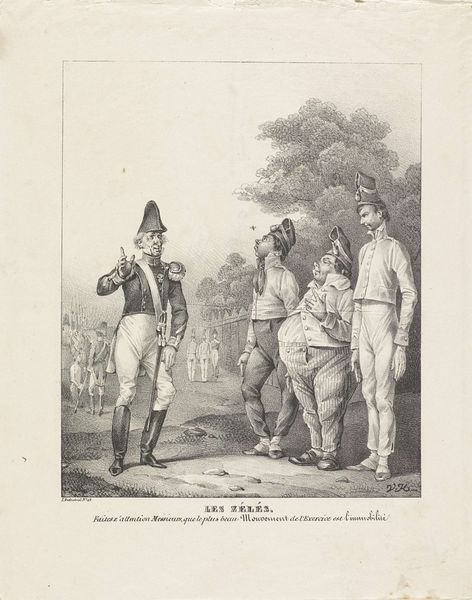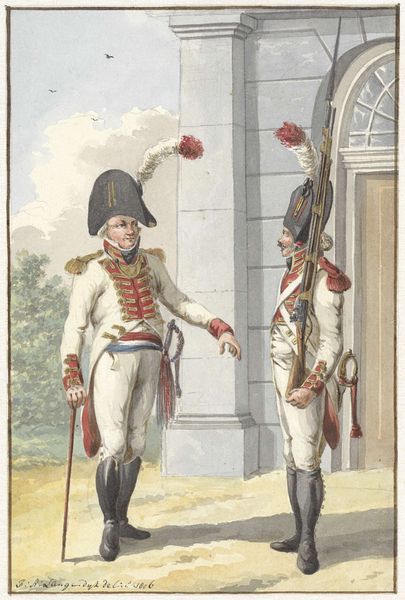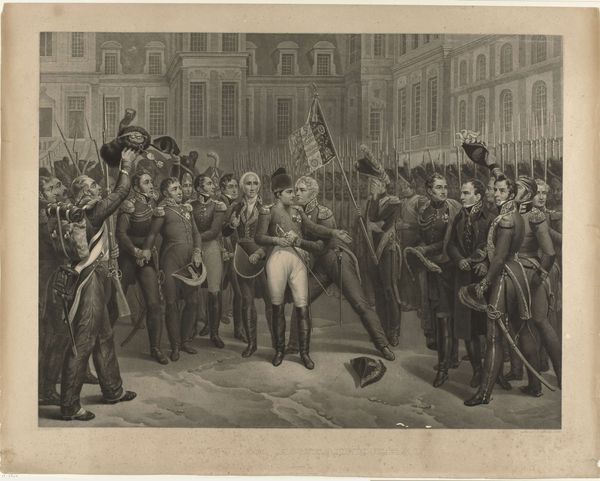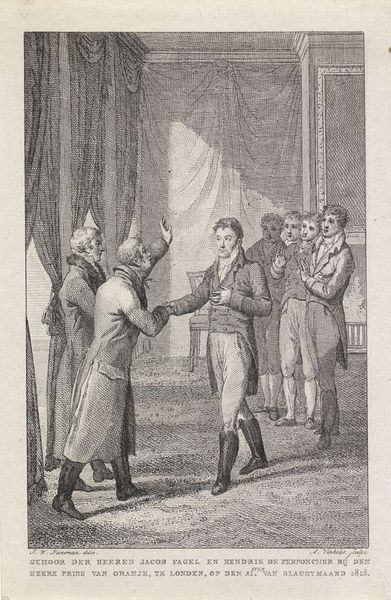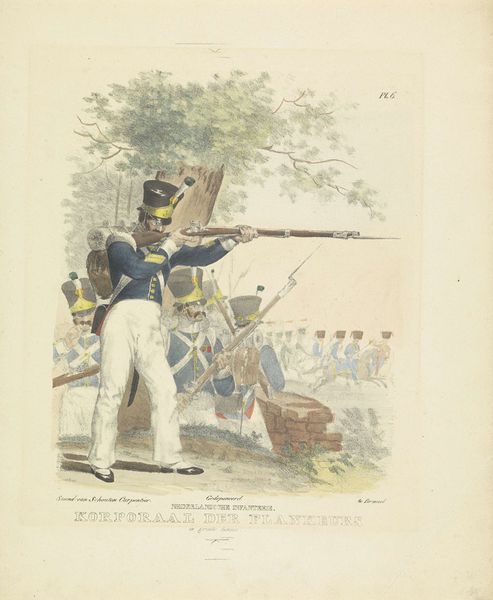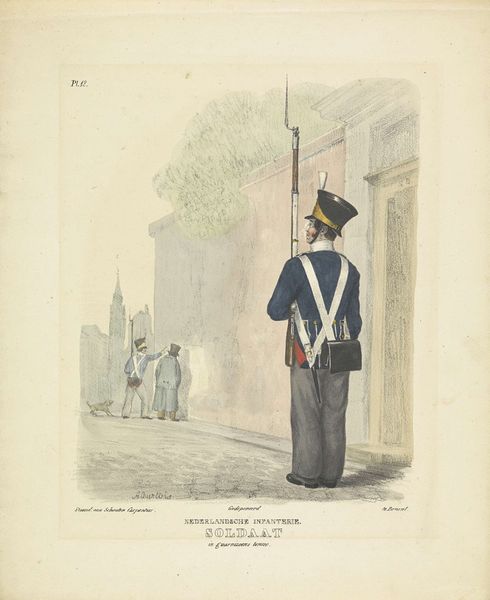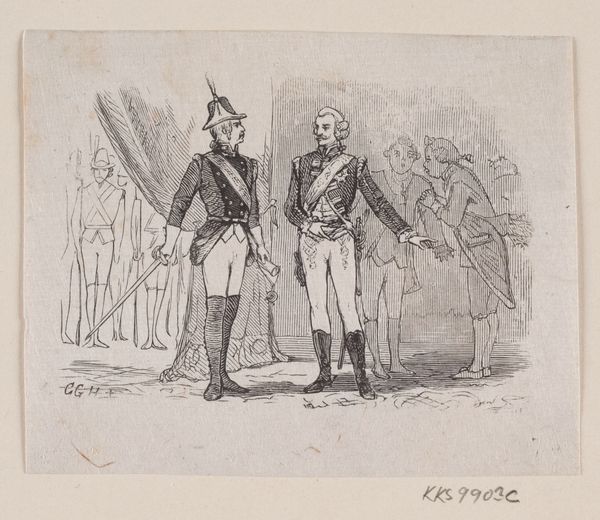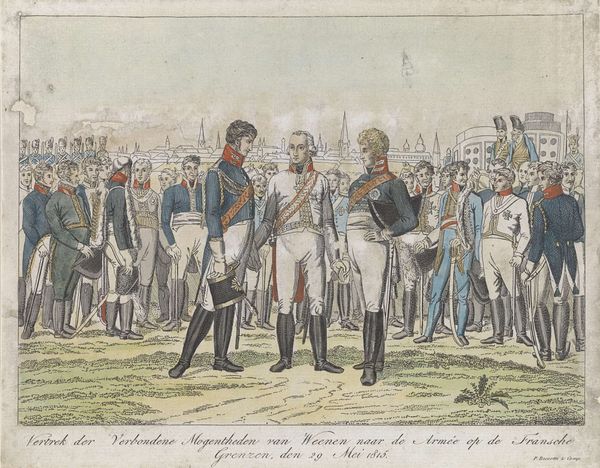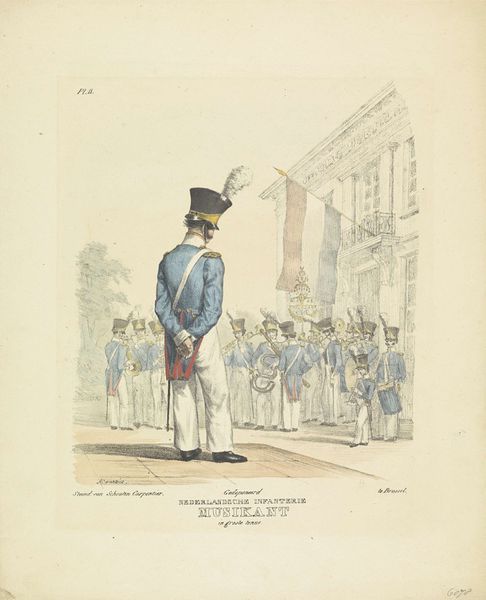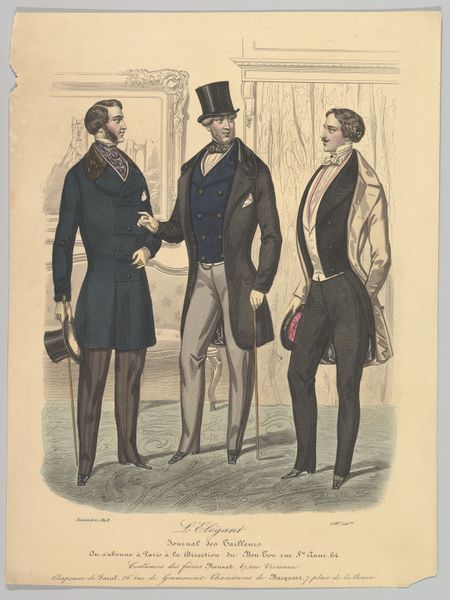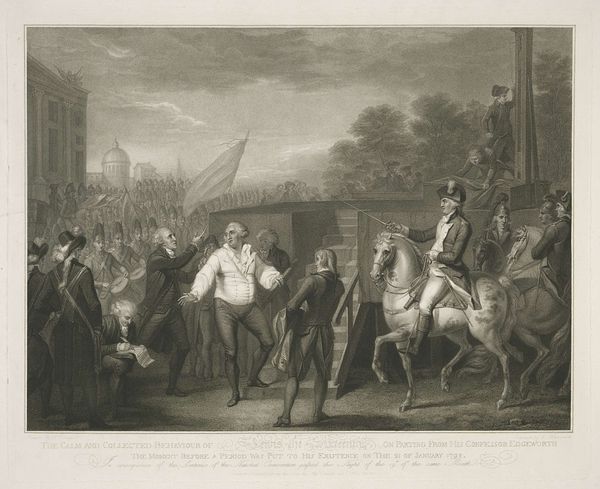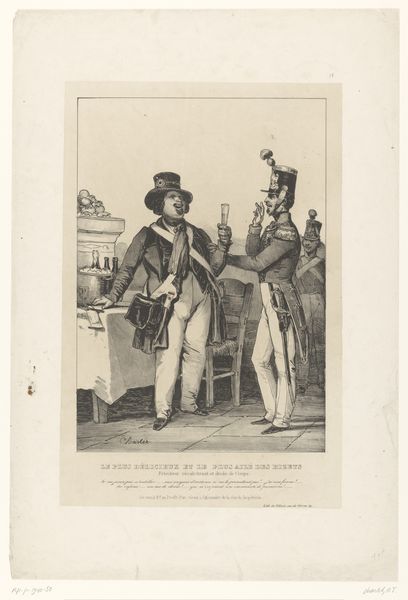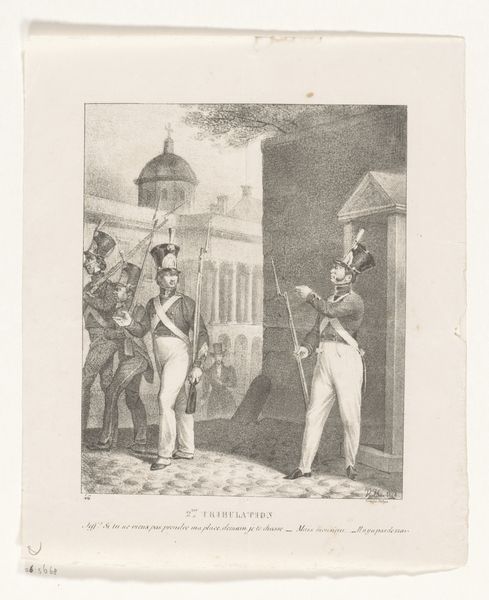
drawing, print, engraving
#
drawing
# print
#
romanticism
#
genre-painting
#
history-painting
#
engraving
#
realism
Dimensions: height 277 mm, width 221 mm
Copyright: Rijks Museum: Open Domain
Jean-Louis Van Hemelryck made this print, *Tweede beproeving*, in 1828, using lithography, a process dependent on the interactions of oil and water. The design was drawn with a greasy crayon onto a smooth slab of limestone, then treated with chemicals so that ink would adhere only to the drawn areas. Looking closely, you can see the rich texture and tonal range Van Hemelryck achieved, the lithographic crayon allowing him to render the scene with incredible detail. The artist has deftly captured the figures' stances, their uniforms, and the architectural backdrop with its dome and classical columns. The print is colored, with the lithographic process enabling the creation of multiple impressions, making art more accessible. This print, like many others from the period, was produced on a large scale, reflecting shifts in labor and class. It speaks to the rise of industrialization, where reproductive techniques made art more widely available. By choosing lithography, Van Hemelryck placed himself at the forefront of a new era of image-making, one that challenged the traditional boundaries between art and commerce.
Comments
No comments
Be the first to comment and join the conversation on the ultimate creative platform.

